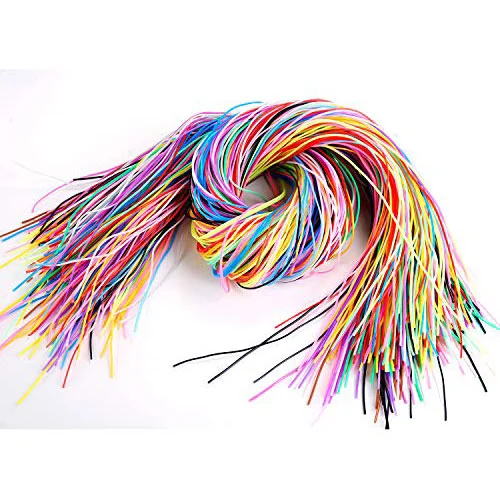A Provocation to Explore Procedural Texts
This term in Grade One we are exploring Procedural Texts. The children will be writing a simple procedural text as their assessment piece. To help them explore the structure of Procedural Texts, we have many of our Investigation Areas set up with procedures for the children to read and follow.
Links to the Curriculum
One of the most popular Investigation Areas has been the Art and Craft provocation - How to Make a Necklace. When designing a provocation, the curriculum objectives are considered. This provocation reinforces many learning intentions:
Literacy
Read and comprehend a procedural text.
Explore the structure of a procedural text.
Numeracy
Create, record and continue a repeating pattern.
Counting to 30.
One-to-one correspondence.
Sorting by size, shape and colour.
Functional problem solving.
Science
Investigate materials and their properties.
Fine Motor
Developing the pincer grip.
Translation, shift and rotation refinement.
Visual Perception and Discrimination skills.
Hand – Eye coordination.
Social and Emotional Skills
Sharing, turn taking and cooperation
Feeling of success which boosts self-esteem.
Setting Up the Procedural Text Investigation Area
This Investigation Area has been designed to be used by up to 4 children. Many more than 4 children request to work here each day, but it was limited to only 4 at any time. Allowing only a smaller number of children to work in this area encourages the children to take turns and negotiate conflicts. This number is also the perfect size for socialising and encouraging the children to help each other. Designing smaller spaces and limiting the number of children in any Investigation Area helps with engagement, oral language and noise levels.
We offered….
A selection of beads in small dishes
Provide acrylic, glass and wooden beads in a variety of sizes, colours and shapes. Present the beads in small clear dishes if possible as this allows the children to visually discriminate between the beads.
How to make a necklace. Investigation Area.
A piece of white fabric or card
Placing the small dishes of beads on a piece of white fabric or card is visually appealing and allows the true colours of the beads to be seen. It also encourages the children to keep the space orderly as the bead dishes have an obvious organisational place.
Acrylic beading string
Scoubi string is perfect for little fingers to bead with.
Our strings were purchased pre-cut but it would have been preferable to have the children measure and cut the string length themselves. The acrylic Scoubi string is ideal for beading projects with young children. It doesn’t fray. The string is strong enough that no threading needle is necessary and yet flexible enough to easily knot. This durable string won’t break and the completed necklace hangs nicely around the child’s neck.
A felt mat will stop your beads from rolling away.
4 pieces of felt
The felt makes a great beading work mat. The beads won’t roll off the table and end up in the cleaner’s vacuum cleaner. The children can easily plan their necklace pattern by laying the beads on the felt without the frustration of having their beads roll away. An alternative to felt would be pieces of grip mat.
How to Make a Necklace Procedure
This could be one large poster text on the wall or small individual texts on the table. If you choose to have the smaller texts, ensure you have at least 2 laminated copies. Laminating the procedure or placing it in a plastic sleeve will ensure it stands up to the wear and tear of continued use.
Printed planning sheets
Children will record their planned pattern on these planning sheets. Place them in a tray or basket off to the side. The children will need to access them easily but they should not intrude on the work space. Having them in a tray or basket keeps them confined and again encourages the children to keep the space orderly.
Tin of colouring pencils or crayons
Children record their necklace pattern by colouring the beads on their planning sheet. Ensure the beads you offer have a matching colour pencil or crayon in the tin.
Download and print your FREE Procedure and Planning Sheet to have this Investigation Area up and running in your classroom today!
If you would like these free resources, you might like to join My Teaching Cupboard's Email Group here. You will get access to my FREE Resource Library when you sign up. In the FREE Resource LIbrary, you'll find the Necklace Planning Sheets and the Procedure for How To Make a Necklace along with some other resources I know you'll find useful.








